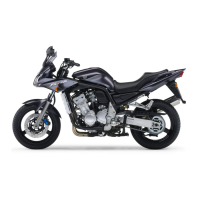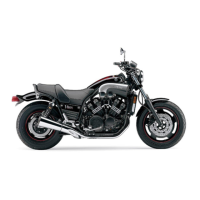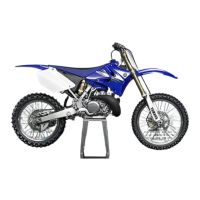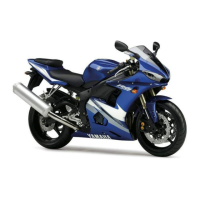1 - 17
GEN
INFO
FEATURES
FUEL INJECTION SYSTEM
Operation and control
The fuel injection timing, injection duration, ignition timing, and the coil energizing duration are con-
trolled by the ECU. To determine the basic injection timing, the ECU calculates the intake air volume
through the signals from the intake air pressure sensor, throttle position sensor, cylinder identifica-
tion sensor, and crankshaft position sensor.
Furthermore, the ECU calculates the final injection timing by adding the following compensations to
the aforementioned basic injection duration: those obtained from the state of acceleration, as well
as those based on the signals from various sensors such as the coolant temperature, intake tem-
perature, atmospheric, and exhaust pipe oxygen concentration level. At the same time, the ECU
assesses the crankshaft position through the signals from the cylinder identification sensor and the
crankshaft position sensor. Then, when the ECU determines that it is time to inject fuel, it sends an
injection command to the injectors. Furthermore, the ECU also controls the length of time the coil is
energized by calculating the ignition timing and the coil energizing duration based on the signals
from these sensors.
Determining the basic injection duration
The intake air volume determines the basic injection duration. In order to operate the engine in an
optimal condition, it is necessary to supply fuel at an air-fuel ratio that corresponds appropriately to
the volume of intake air that is constantly changing, and to ignite it an appropriate timing. The ECU
controls the basic injection duration based on the intake air volume and engine speed data.
Detection of intake air volume
The intake air volume is detected primarily through the signals from the throttle position sensor and
the intake air pressure sensor. The intake air volume is determined in accordance with the signals
from the atmospheric pressure sensor, intake temperature sensor, and the engine speed data.
Composition of basic injection duration
È
RPM
É
Injection duration
Ê
Cranking
Ë
Warm-up
Ì
Idle
Í
Acceleration
Î
Constant
Ï
Deceleration
Ð
Start
Ñ
After start
Ò
Basic injection dura-
tion
Ó
Voltage compensation
duration
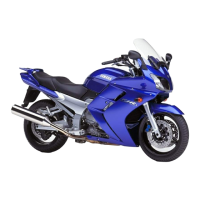
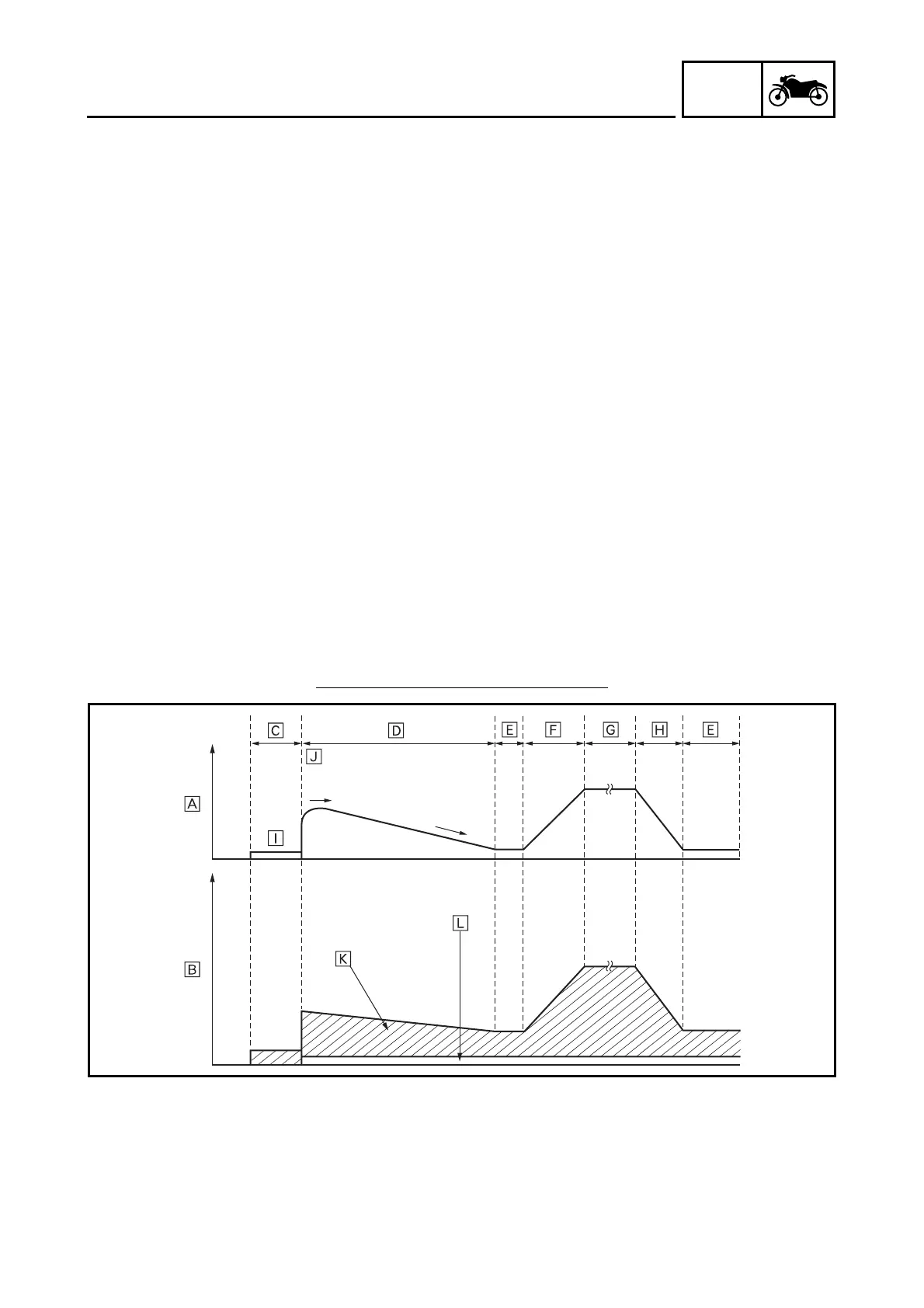